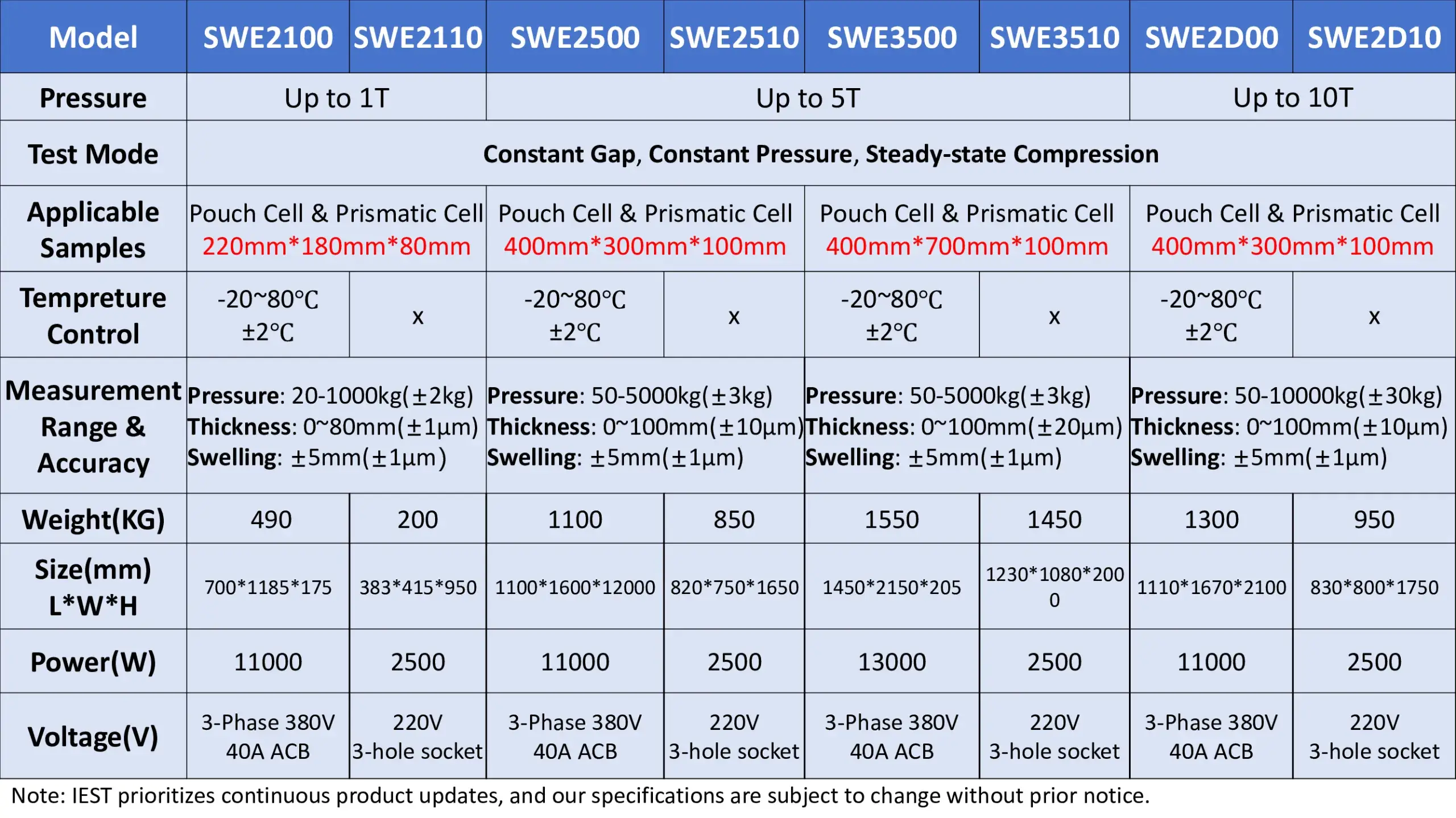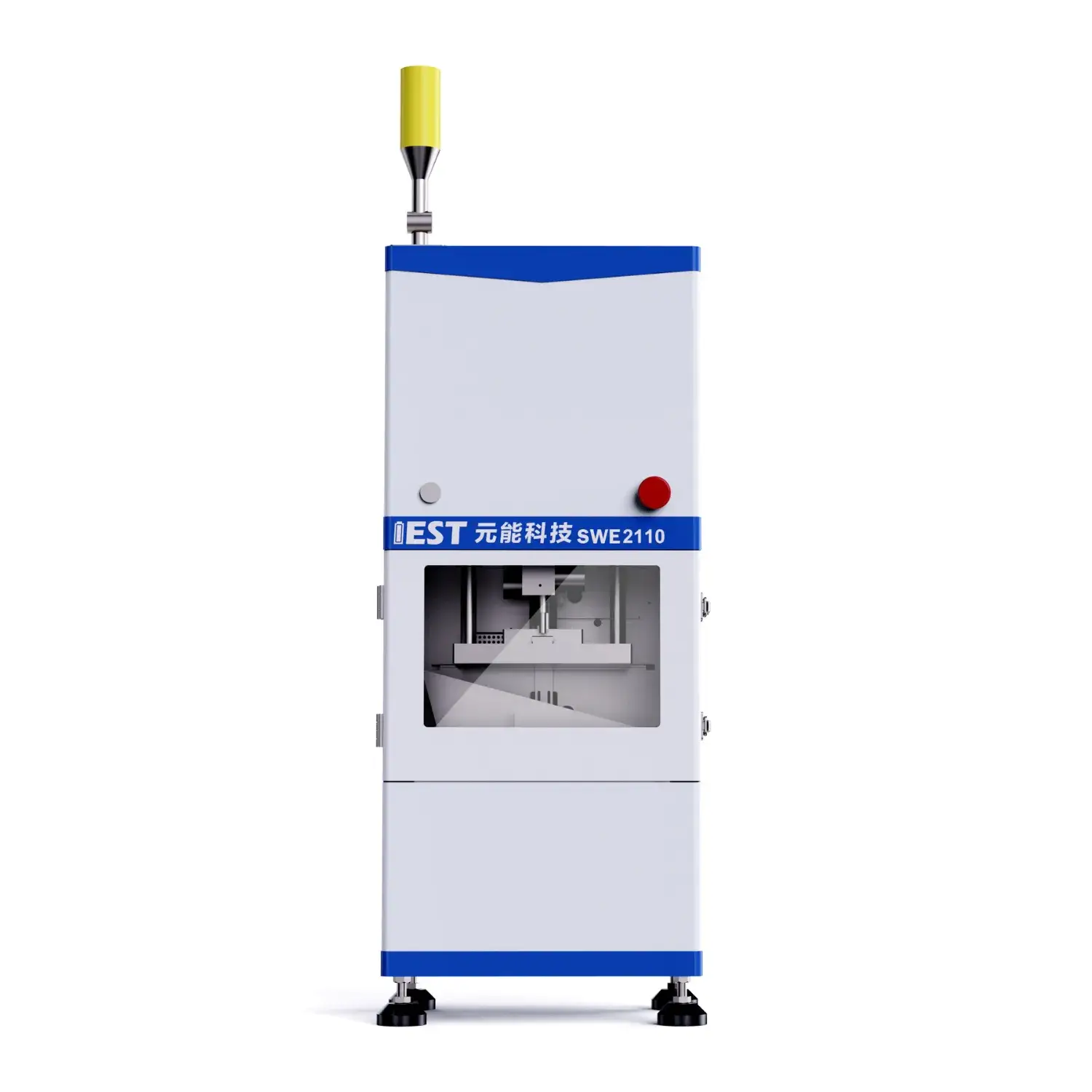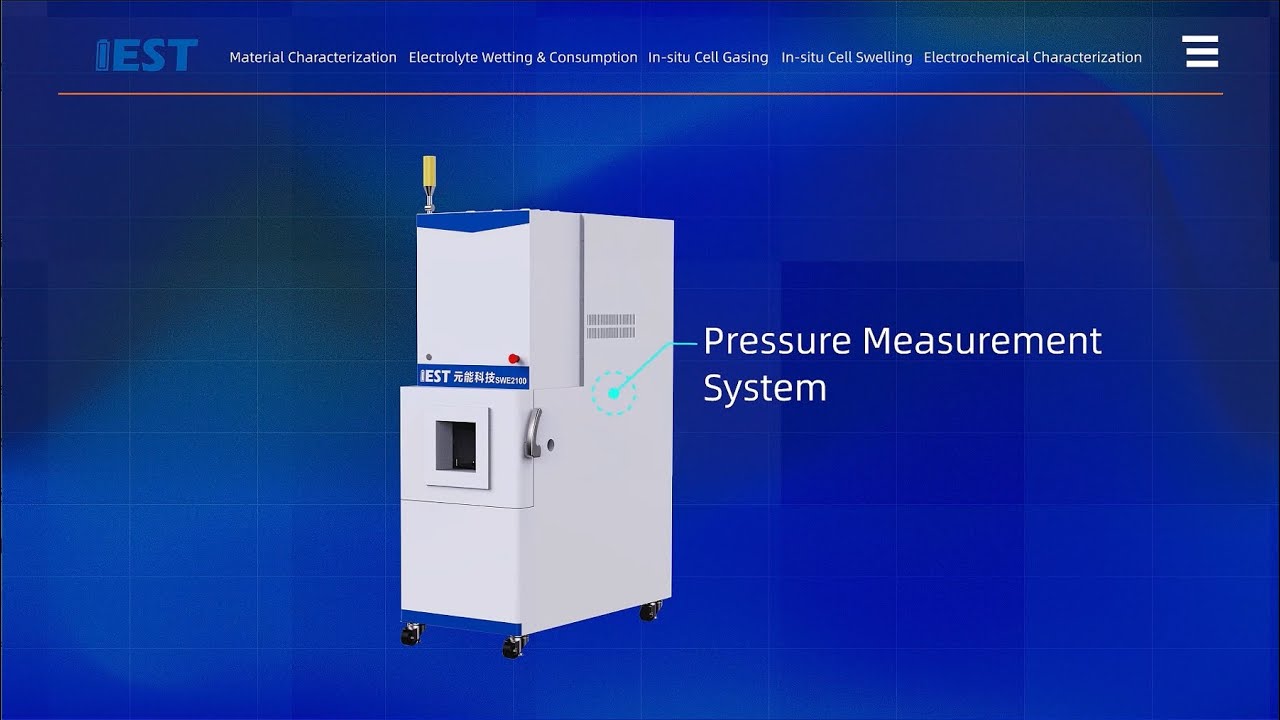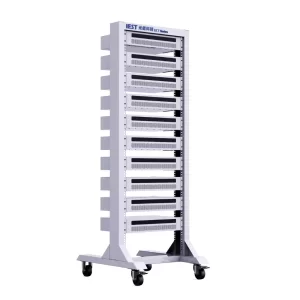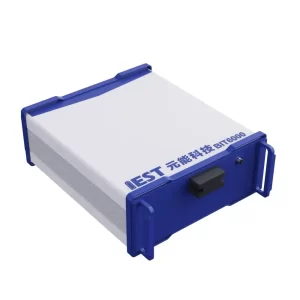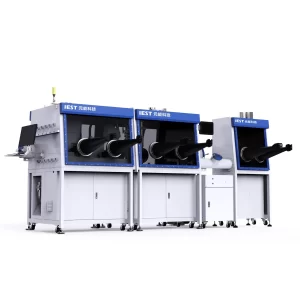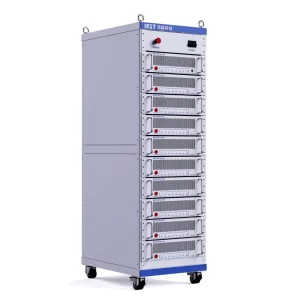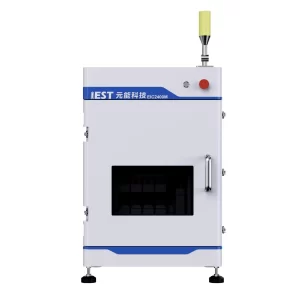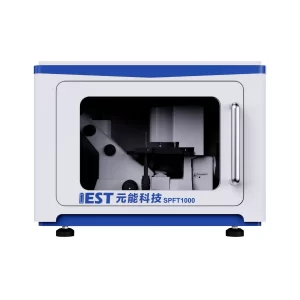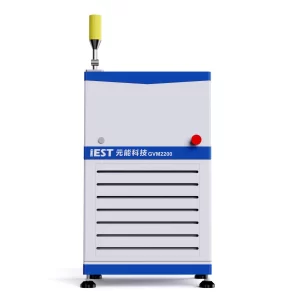Description
1. Swelling behavior of the lithium ion battery(LIB)
During the charging and discharging process of lithum-ion batteries(LIBs) as lithium ions are intercalated ordeintercalated into the electrodes, the LIBs will expandand contract. Ideally, the intercalation and deintercalation of lithium ions are reversible, but in the actual cycle process, there is always a part of lithium ions that cannot be extracted from the electrodes or deposits on the surface of the anode as an insoluble by product during the cycle, resulting in irreversible swelling of or other more serious consequences, such as the deformation of the LIBs, the fragmentation of material particles, the rupture of the solid electrolyte interphase(SEI), and the consumption of electrolyte. Thus the swelling behavior of the LIB becomes an impotant indicator for evaluating the reliability of the battery. During the production process, the particle size, binder and must be optimized in advance. For the next generation anode materials with higher energy density such as silicon and lithium metal theswelling ratios ot these materials are much greater than that of the graphite anode. Therefore. how to accu.rately and effectively evaluate the swelling behavior of the LIBs made by these new anode materials becomes more important, which can guide the design of the LIB pack and improve the space utilizatior under the premise of safety.
On the other hand, the lithium plating also can cause the expansion of LIBs. Thus, how to identify the lithium plating window under different charging rate and temperature by the expansion behavior of LIBs is very helpful for the developments of the fast charging technology, sectional charging technology and other charging strategies.
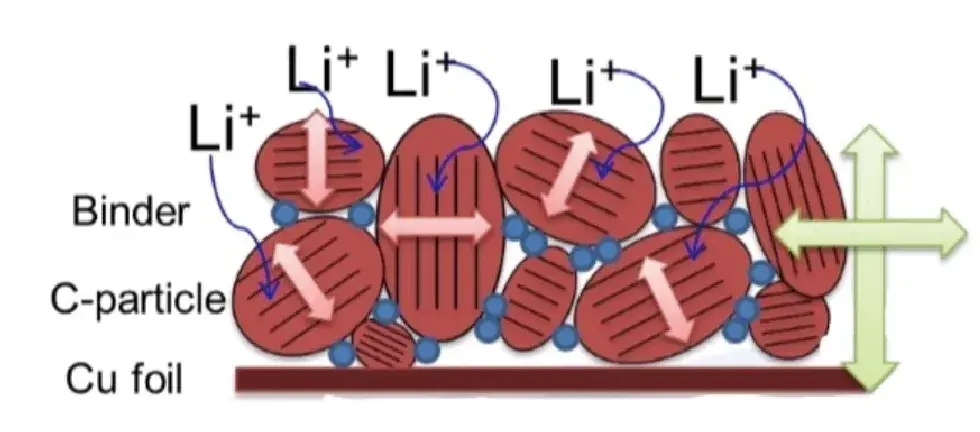
2. Traditional Methods for Swelling Evaluation
- Disassemble different—condition cells and measure the thickness of the cell and electrodes by micrometer;
- Li plating window judgment: Through the disassembly of full charged cell to judge the lithium precipitation on electrode surface by visual inspection;
- Destructive Test: It is a cell consuming destructive test, and there is a higher safety risk and higher operation cost because the dry environment and professional people are required;
- Non in-site Test: Only the thickness data on several specific states can be acquired, the swelling behavior of cells cannot be described systemically; Big Deviation for lithium plating window assessment: Not every lithium plating SOC and potential in different rate can be quantified.
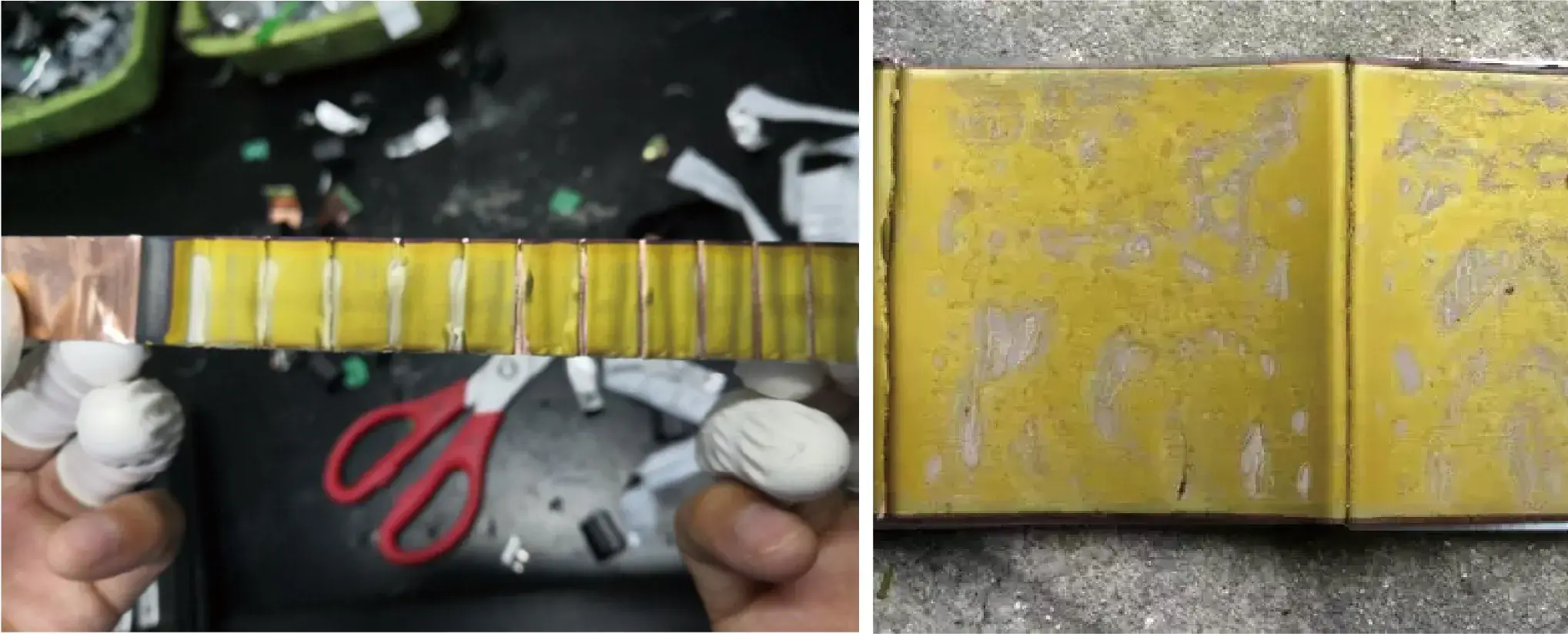
3. IEST Creative Swelling Solutions
- In-situ swelling analysis system: Combined with the highly stable automatic platform and the high-precision thickness and mechanical sensors, it can achieve long-term stability and accurately detect the expansion thickness and the expansion force under different conditions.
- Multi-function test modes: the constant pressure and constant gap test modes can be realized for the cell, and the performance of the cell under different stress conditions can be evaluated.
- High precision control: The traditional fixture will generate ~70um deformation under the constant gap testing mode, which leads to the inaccurate swelling force test. However. the in-situ SWE series analysis system of IEST can control the change of the gap within ~1um by active modulation, and record the accurate swelling force during the constant gap testing mode.
4. SWE Series Instrument Schematic
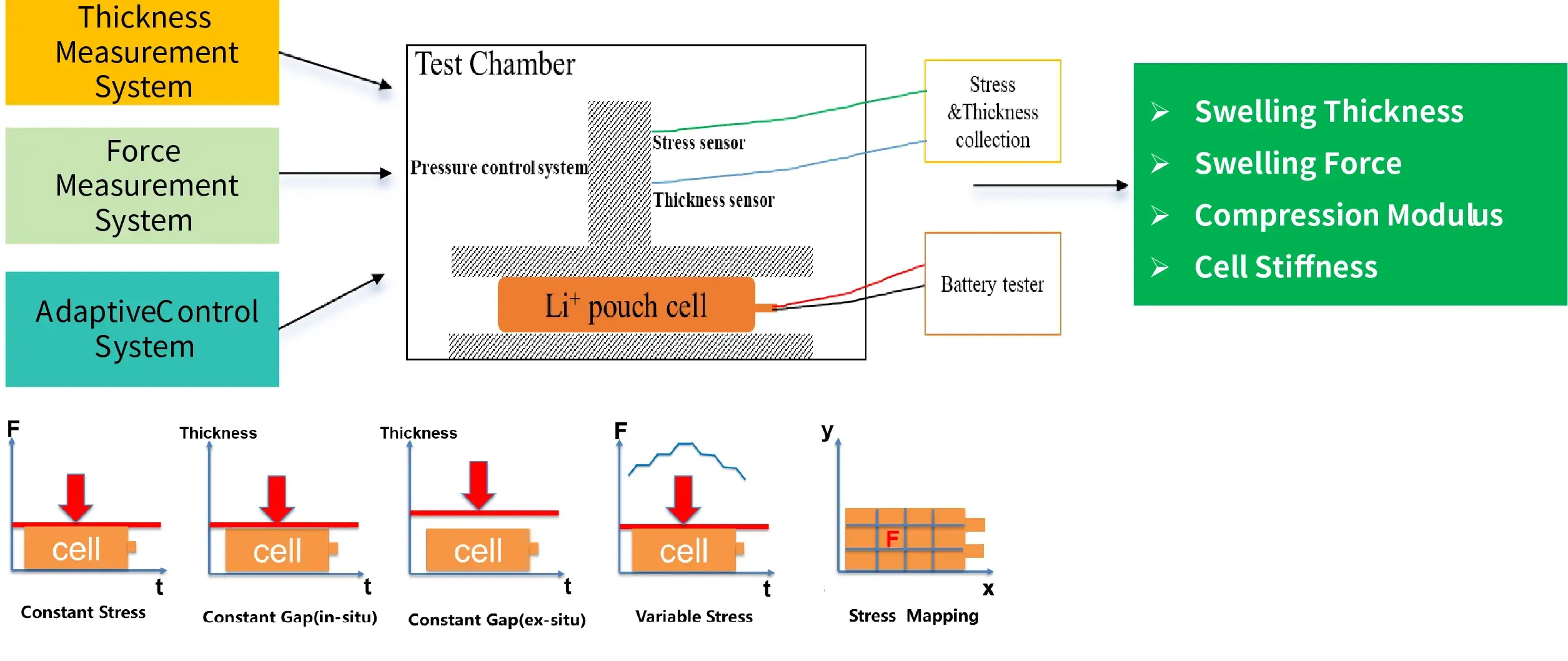
5. Test Range & Accuracy
- Force: 1kg~10T(Accuracy: 0.3% F.S)
- Displacement: 0.1mm~100mm (Accuracy: 1μm)
- Number of channels: 1-4 channels
- Temperature: -20℃~80℃
6. Software
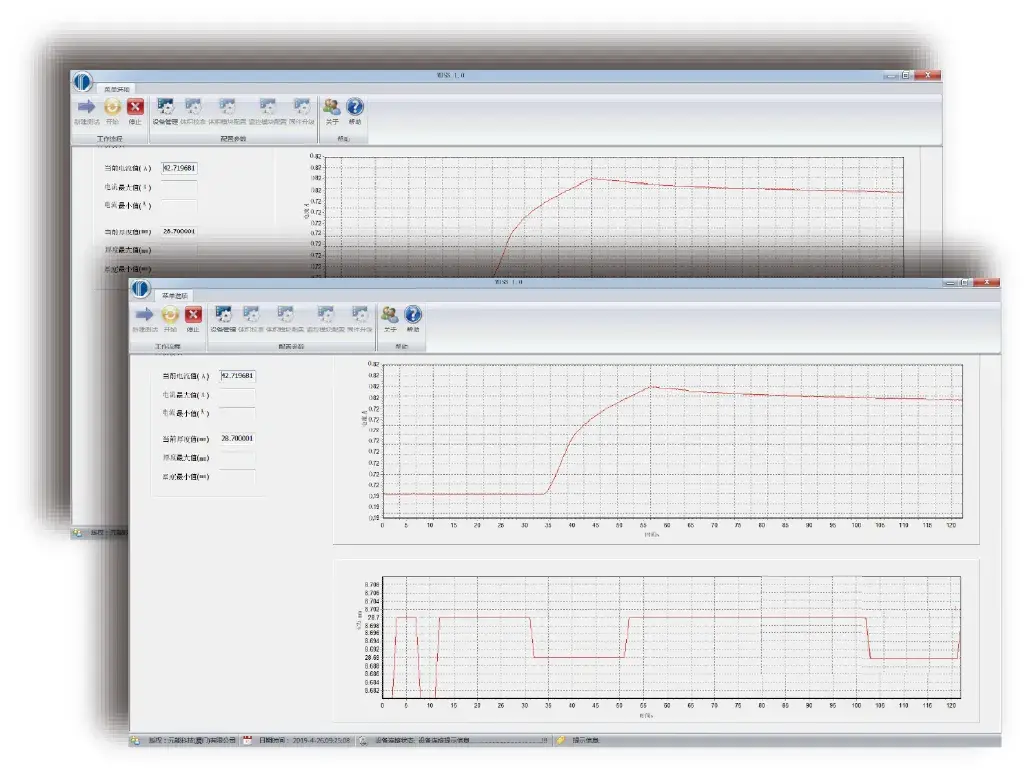
7. Applications
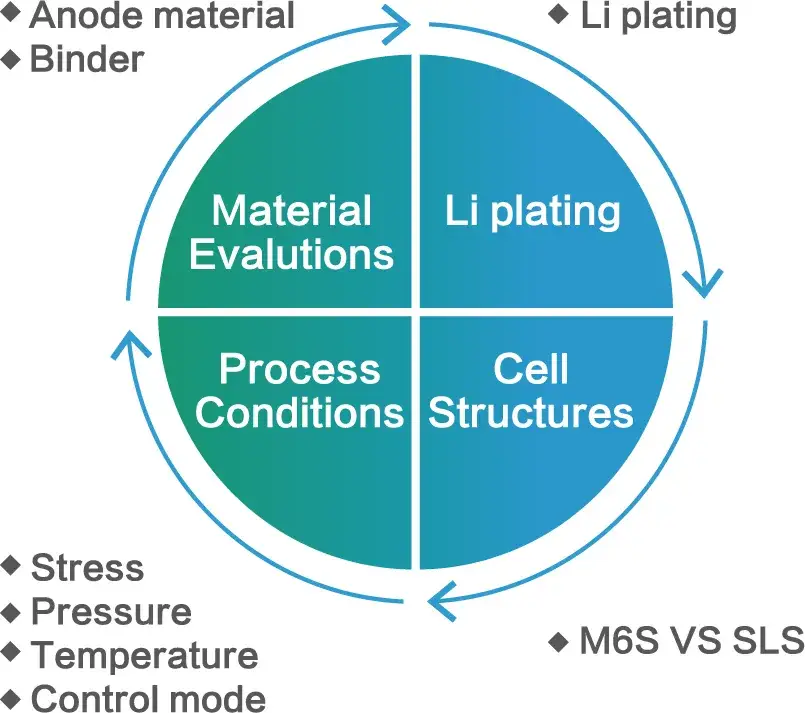
8. Applicable Samples

Applications
1. Application Cases: Material Evaluations
1.1 Formation and charge-discharge swelling of cells with different Si/C contents

Conclusion:
- The higher the silicon content in the anode, the greater the swelling is (Max thickness change is around 40%), and the silicon-lithium alloy formed will affect graphite’s phase transition potential of lithium intercalation.
1.2 Cycle swelling of cells with different binders
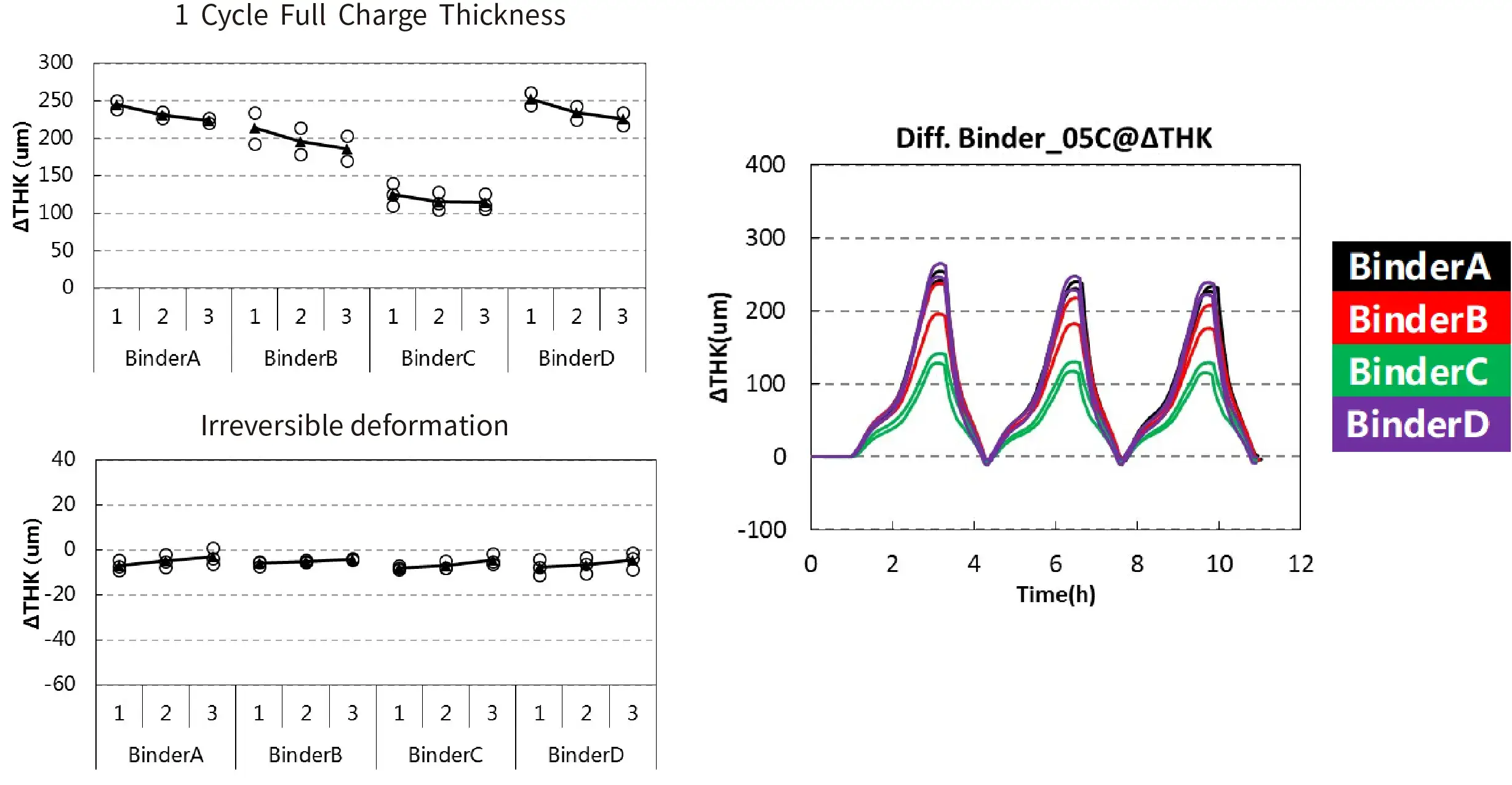
Conclusion:
- The irreversible swelling of the 4 tested cells is similar, and the main difference lies in the swelling thickness after one cycle of full charge, that cells with binder C outperformed the others.
2.Application Cases: Lithium Plating
2.1 Lithium plating under different rate
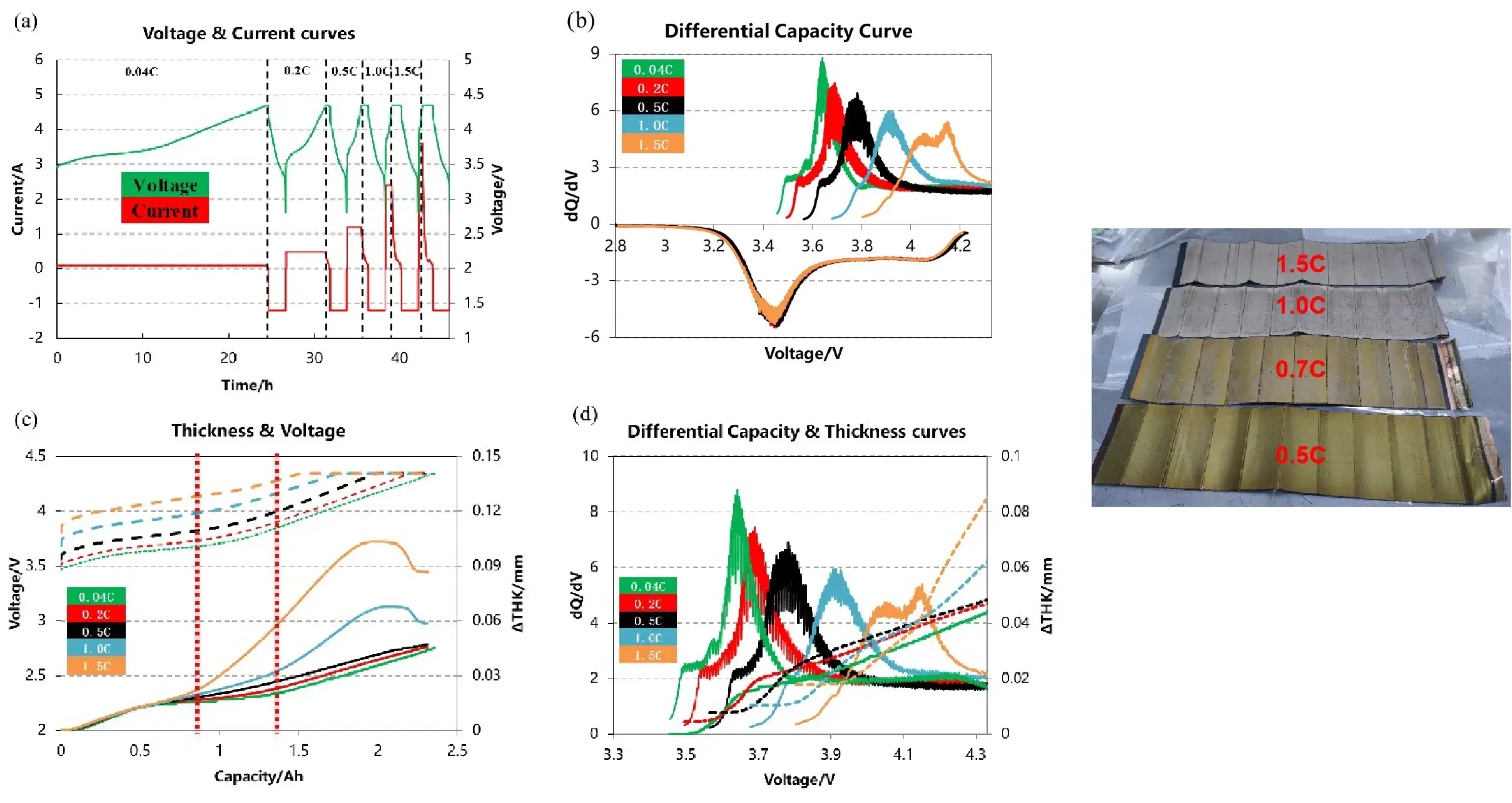
Test method: Charge the cells at different rates and discharge them at the same rate to analyze the differences in their voltage curves and swelling thickness curves.
Conclusion:
- The polorization increase with the increase of rate.
- Lithium plating may occur when the slope of the Thickness & Voltage curve suddenly changed.
2.2 Lithium plating under different tempreture
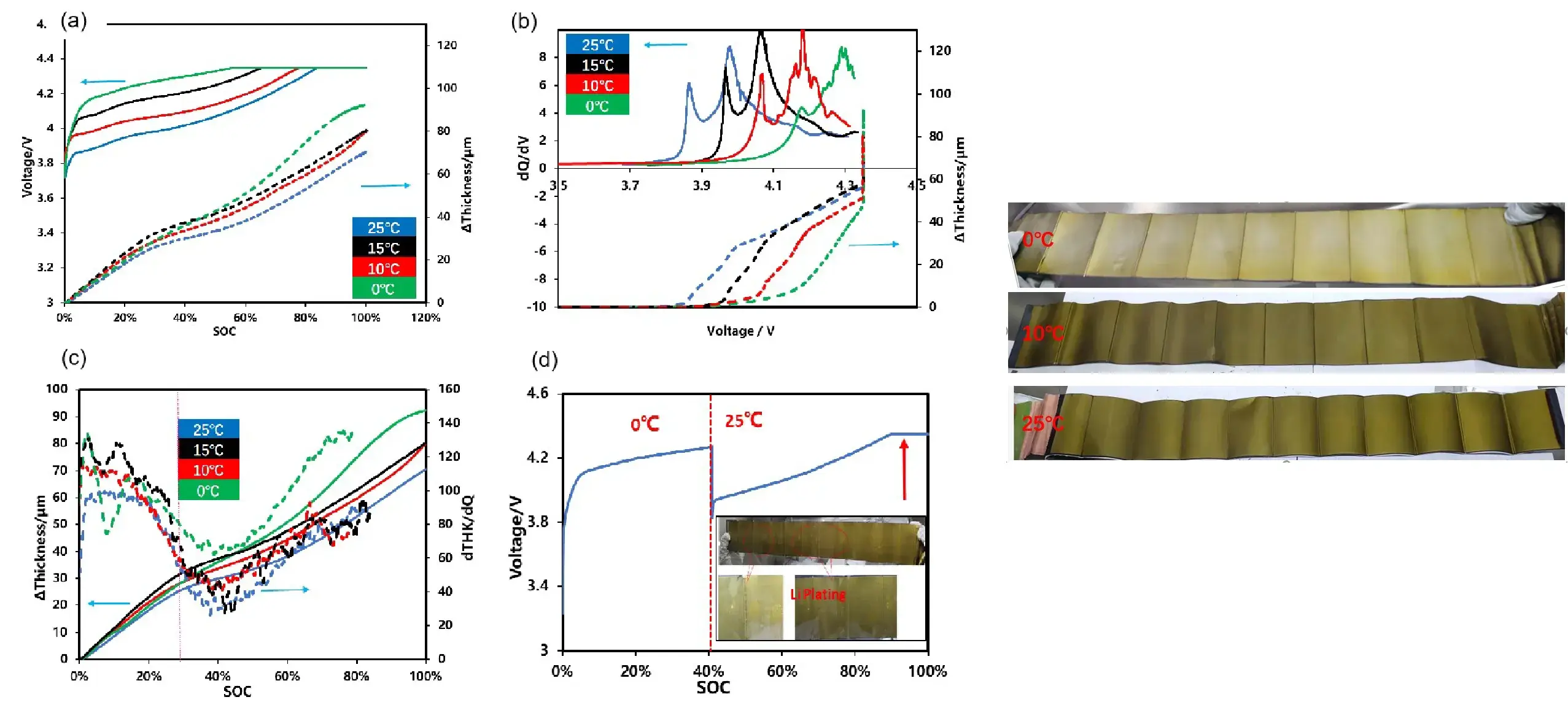
Test method: In-situ detect the thickness curves of batteries with different temperatures.
Conclusion:
- The slope of the cell’s thickness curve increase with the decrease of temperature.
- Lithium plating may occur at 40% of SOC under 0℃.
3. Application Cases: Cell Structure
3.1 Multi-layer jelly rolls vs. Single-layer stacked cells
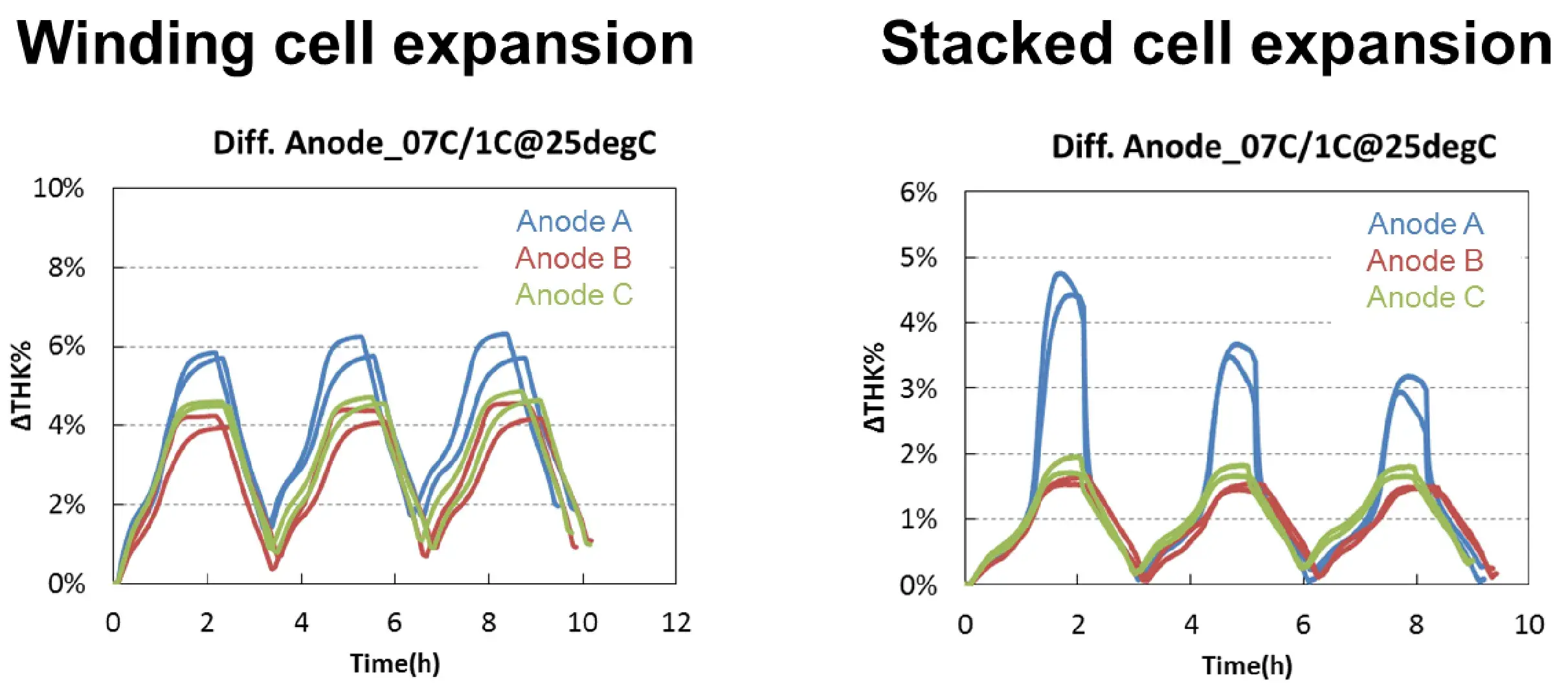
Conclusion:
- Two models are used to evaluate the swelling of different anode cells, and the comparison law is basically the same as A> C> B.
- Because the two sides of the winding are bound, the crimping stress caused by the lateral swelling accumulates in the middle, so that the thickness increases with the cycle, and the four sides of the lamination are not bound, so the crimp stress of the group A pole piece with larger lateral swelling is released during the cycle, and the thickness decreases with the cycle. (Single-sided anode).
- In-situ Swelling can be used to deeply analyze the influence of process on stress and strain.
3.2 Swelling stiffness VS Compression stiffness under constant pressure
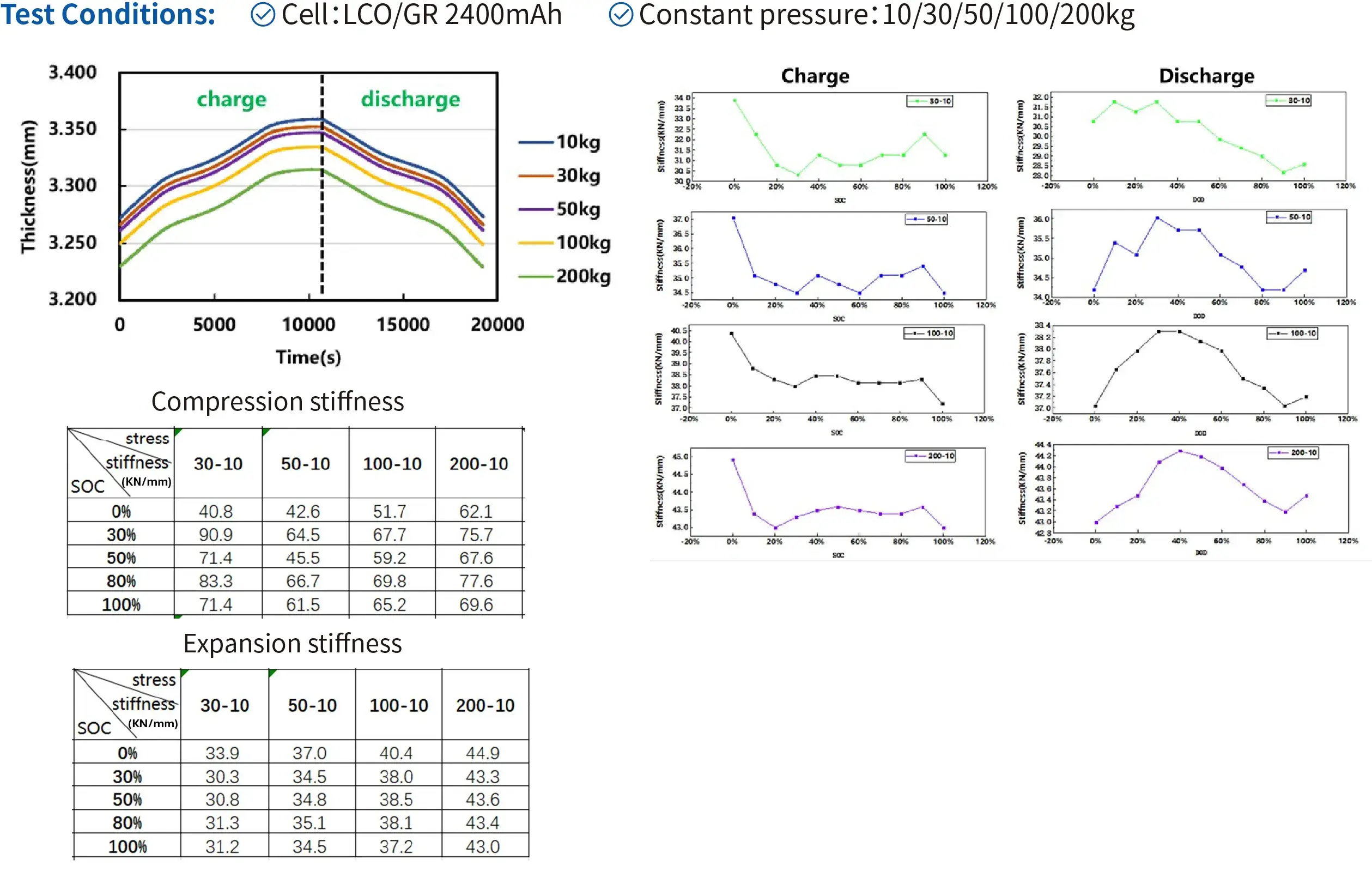
Conclusion
- The expansion stiffness changes regularly with charging and discharging.
- The difference between expansion stiffness and compression stiffness is obvious.
4. Application Cases: Process Conditions
4.1 Swelling of prismatic cells under different pre-stress
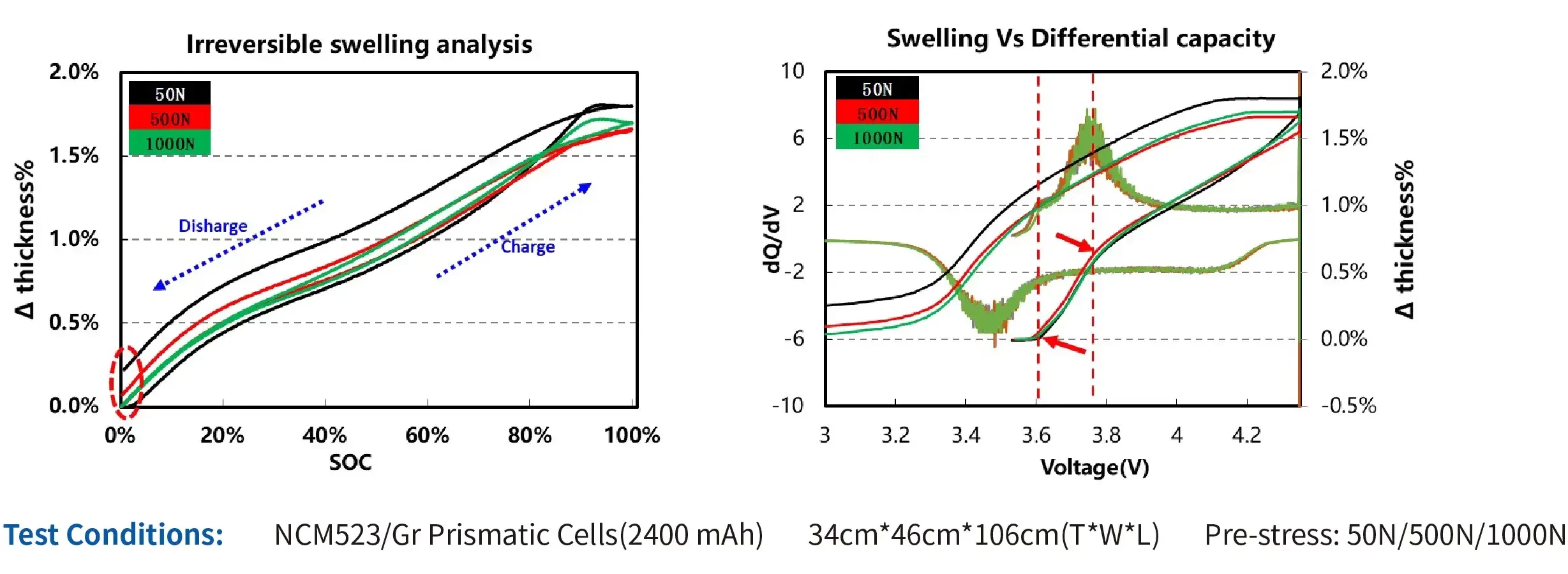
Conclusion:
- The proportion of irreversible swelling of the cells can be reduced by increasing the pre-stress.
- During the charge process, the 2 inflection points of the swelling curve correspond to the 2 peaks of the diferential capacity curve, indicating that the swelling of the cell is related to the phase transition of lithium intercalation & deintercalation.
4.2 Swelling of prismatic cells under different temperature
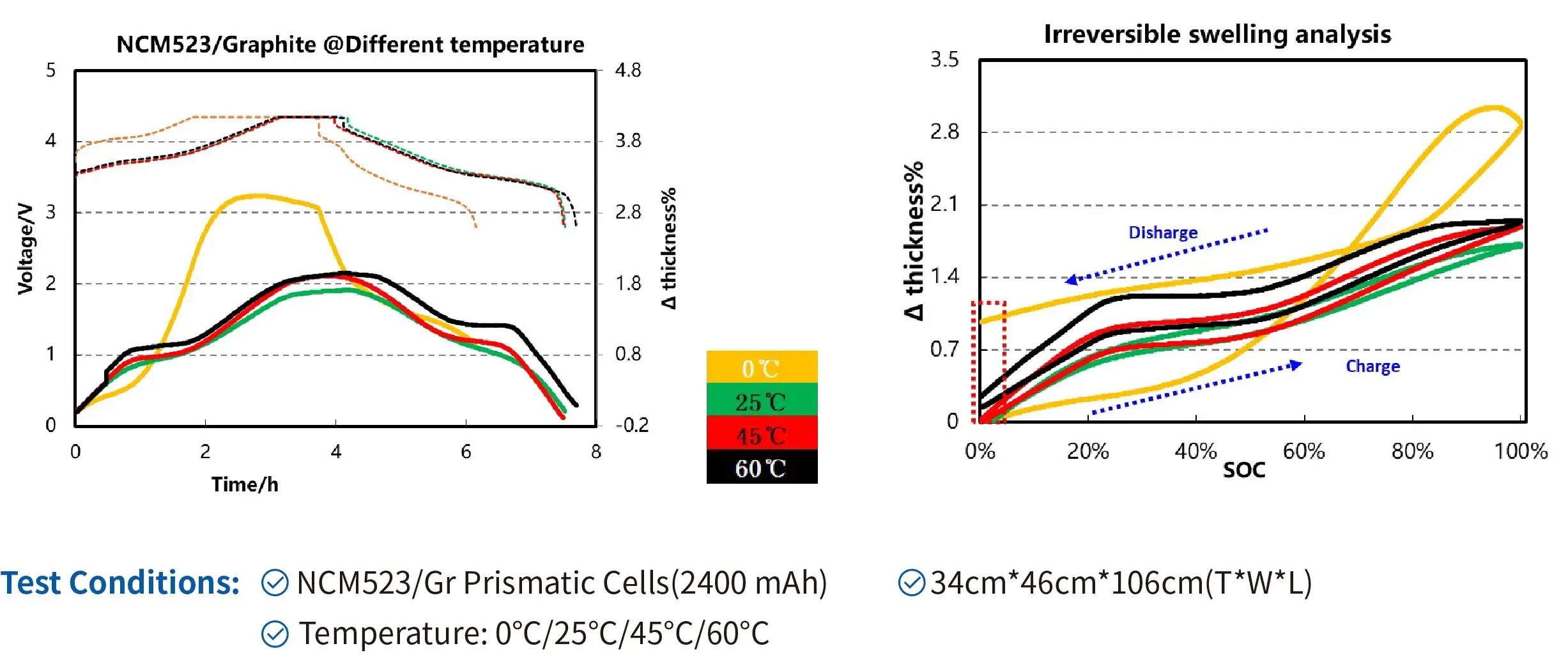
Conclusion:
- The irreversible swelling of the cells increases in both cases when the temperature increases from 25℃ to 60℃, as well as decreases from 25℃ to 0℃. However, the causes of such swelling under high-temperature and low-temperature conditions may differ.
4.3 Swelling of prismatic cells under different cycles
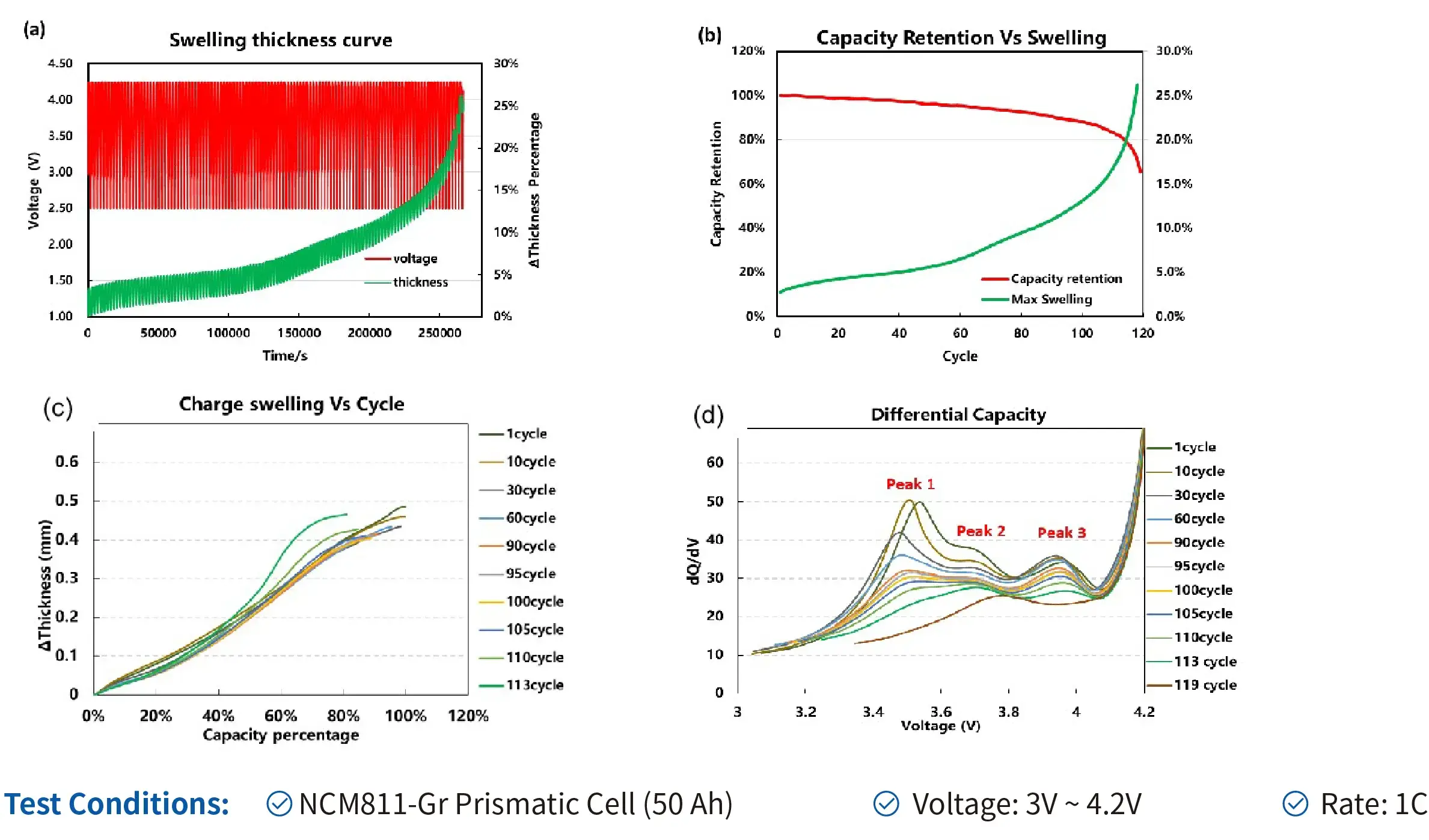
Conclusion:
- The swelling curve of the cell corresponds to its capacity attenuation curve. Generally, when there is a sudden dropin capacity (the intersection point of the 2 curves), it is either due to gas generation or side reactions.
- Lithium plating may occur after 115th cycle.
4.4 Swelling of prismatic cells under different pre-stress
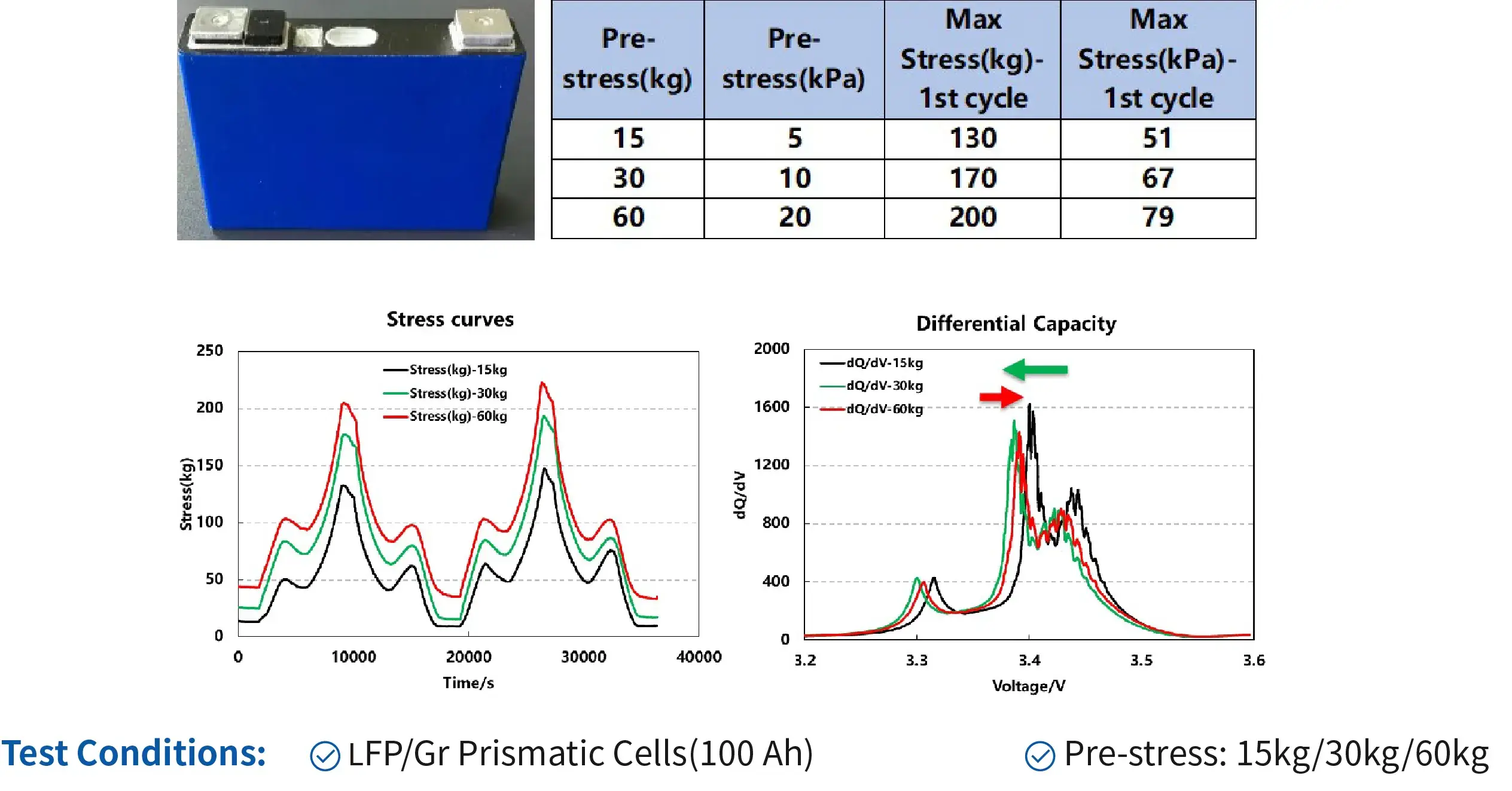
Conclusion
- The initial gap of the cells gradually decreases with the increase of pre-stress, and the variation in swelling force becomes more significant during the charge and discharge process.
- The charge polarization of the cells first decreases and then increases with the increase of prestress, indicating that a pre-stress ofaround 30kg is beneficial for improving the rate performance of prismatic cells.
Video
Specifications
